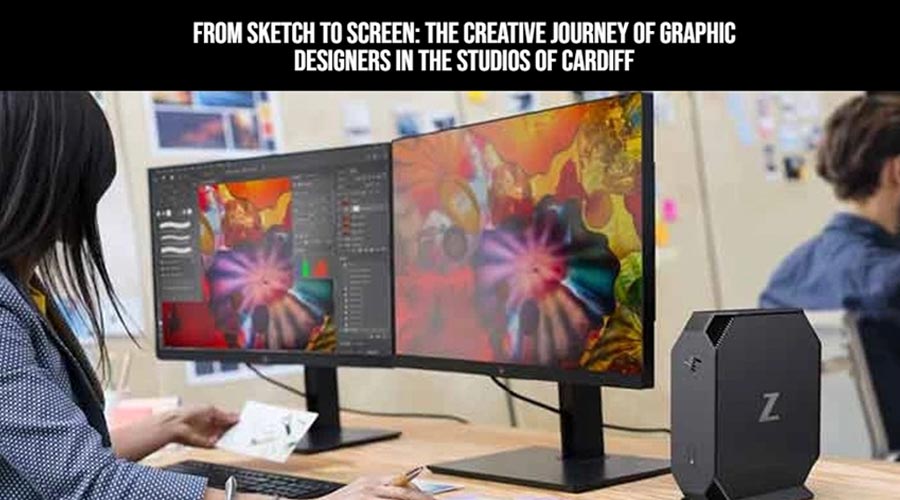Bringing Knowledge to Life: Animation in Educational and Training Videos

In a world full of information, audiences look for engaging and effective ways to learn. With animation – a powerful visual language, can breathe life into educational and training videos. By transforming dry presentations into interesting learning experiences. This comprehensive guide will delve into the use of animation videos. Further, exploring its benefits, considerations for educational and training videos production, and best practices for maximizing its impact on presentations.
Aid of Animation in Learning
Traditional presentations with text-heavy slides and lectures, can struggle to gather attention and solidify knowledge. Whereas, animation offers a vibrant alternative, unlocking a treasure of benefits for educational and training videos:
- Enhanced Understanding: Animations excel at visualizing complex concept for better learning experience. It makes learning easier to grasp and retain.
- Increased Engagement: Movement, humor, and engaging characters with animation draws viewers to active learning.
- Accessibility and Adaptability: Animation reduces language barriers, by utilizing visuals that resonate globally. Additionally, animation allows to capture live-action footage, offering flexibility in exploring concepts.
- Retention Through Storytelling: Combining narratives with animated sequences allows for emotional connection and knowledge retention.
Animated Educational vs. Training Videos:
While both educational and training videos, aim to educate. Both serve distinct purposes that influence the use of animation:
- Educational Videos: The educational videos are used to cater a broader audience, who are seeking general knowledge. Animation in educational videos emphasizes clarity, by simplifying complex concepts into engaging visuals. Example: Think of animated explanations of historical events, etc.
- Training Videos: The training videos are focused on developing specific skills for a targeted audience who are getting trained for a specific skillset. These training videos leverage animation for demonstration as well as a step-by-step instruction. Example: Imagine animated tutorials demonstrating safety procedures.
From Script to Screen: The Animation Production Process
A collaborative journey is involved in creating engaging animated educational or training videos. Here’s a breakdown of the key stages:
Pre-Production:
- Define Your Goals: Determine the learning objectives to be visualized inwhile the educational video production process. Focus on what knowledge or skills do you want audience to learn?
- Know Your Audience: Tailor your educational and training content and animation style that resonate with the viewers’ demographics: age, background, and learning style.
- Scripting: Draft a clear and concise script outlining the key points and narrative flow. Animation thrives on a well-organized script, that ensures smooth storytelling and effective delivery of information.
- Storyboarding: Visually map out the video sequence, by using sketches or digital tools to craft detailed storyboard for animation. This will ensure clarity and consistency throughout the animation process.
Production:
- Animation Style: Choose the appropriate animation style that matches both with your content and budget. A Traditional hand-drawn animation gives a timeless feel, while 2D and 3D animation can showcase impressive levels of detail and realism. While, whiteboard animation provides a simpler, yet effective approach.
- Character Design: Develop engaging characters to be used in your animation, if applicable. Consider their role in the storytelling and how their design helps in creating effective learning experience.
- Voiceover and Sound Design: Utilize a clear, engaging voiceover complementing your educational and training video’s animation. Adding Sound effects and music will add depth and further enhance the learning experience.
Post-Production:
- Animation Assembly: Assemble the various animation elements, voiceover, and sound design into a full video. Pay close attention to visual storytelling to keep viewers engaged.
- Quality Assurance: Conduct thorough testing to ensure smooth playback, high-quality audio, and a clear presentation of information.
- Distribution: Choose the right platform for sharing your animated video. Consider options like online learning platforms, social media channels, or internal company servers.
Best Practices for Captivating Animated Learning Videos
- Clarity Above All: Keep in mind that the primary goal is to educate. Ensure information is presented clearly and concisely, even within the vibrant realm of animation.
- Balance Narration and Animation: Leverage narration strategically to complement with animation to highlight key points.
- Keep it Engaging: Animation thrives on movement, humor, and engaging visuals. Make sure to use animation to maintain audience interest. Therefore, avoid static sequences.
- Focus on Learning Objectives: Prioritize the intended learning objectives. While animation adds visual flair, ensure that all animated elements work towards delivering the core educational or training message.
Advanced Animation Techniques for Enhanced Learning:
- Kinetic Typography: Text itself can become animated, which means bringing words and phrases to life. Imagine instructions unfolding step-by-step through animated text. This technique reinforces information delivery with added layer of visual interest.
- Interactive Animation: Adding interactive elements within the animated educational or training video, encouraging viewers to participate actively. Including clickable hotspots within an animation that reveal additional information or interactive quizzes that test knowledge retention can ensure deeper engagement and self-directed learning.
- Data Visualization: Transform complex data sets into visually compelling infographics or animated charts. Animation allows for dynamic data visualization. And making trends and relationships between data points that are easier to understand.
Animation for Accessibility and Inclusiveness
Animated educational or training videos can enhance accessibility and inclusivity:
- Closed Captioning and Transcripts: Provide closed captioning and transcripts along with your animated video for viewers with hearing impairments.
- Multiple Language Options: Offer multiple language through subtitles or voiceovers, making your video accessible to a wider audience.
- Descriptive Narration: Utilize descriptive narration within your video. In order to provide details about visuals for viewers with visual impairments to ensure maximum engagement.
The Future of Animation in Learning and Development
The animation in educational and training videos is constantly evolving. Let’s explore more:
- Virtual Reality (VR) and Augmented Reality (AR): These immersive technologies are transforming learning experiences. For example, students can explore historical sites in VR. And trainees can navigate complex procedures through AR overlays.
- Artificial Intelligence (AI): AI advancements is making the way for personalized learning experiences. Imagine animated tutors who adapt their delivery style and pace especially based on individual learner needs and progress.
- Gamification: Keep in mind, that incorporating game mechanics and interactive elements within animated videos can significantly boost engagement and knowledge retention. Imagine educational games with animated characters or animated simulations that challenge viewers to apply learned concepts.
By embracing the power of animation, educators and trainers. Both, can create dynamic, engaging, and accessible learning experiences. From simplifying complex concepts to fostering active participation. Animation in videos, empowers viewers to learn and retain information impactfully. So, unleash the magic of animation in your next educational or training video. Also, watch your presentations transform into captivating journeys of knowledge and skill development.




